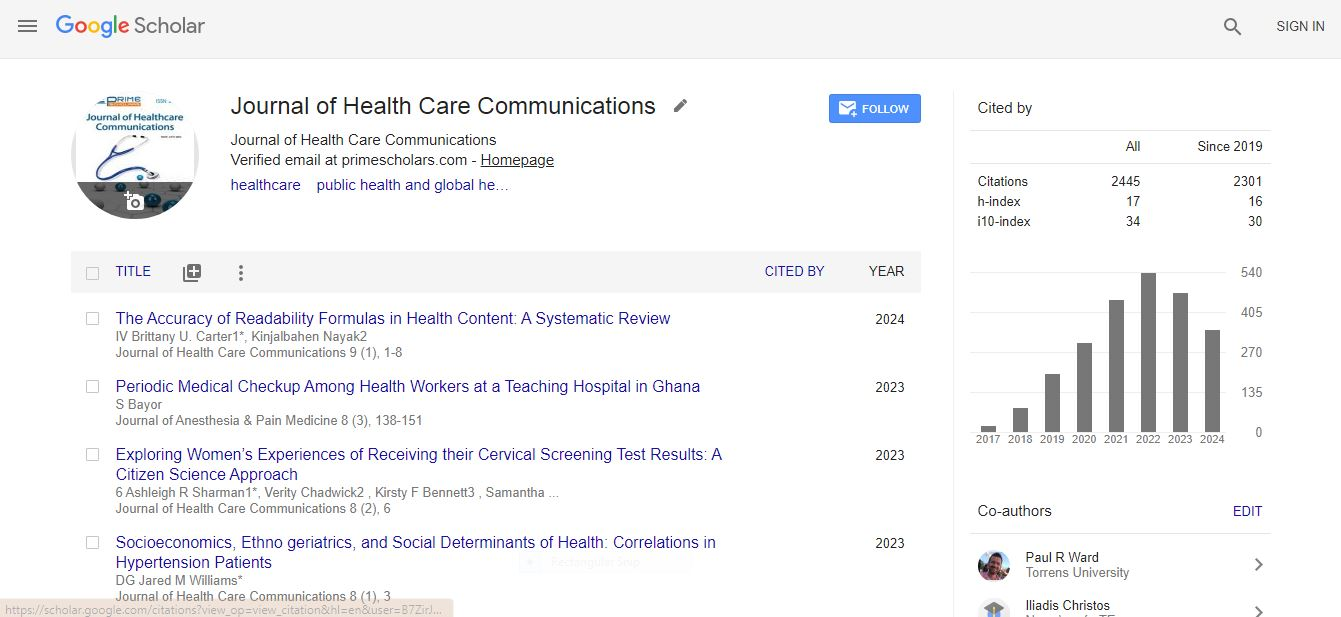Research Article - (2025) Volume 10, Issue 1
The Prevalence of Alzheimer's Disease and Hospital Readmissions Rates: A Retrospective Study
Hima Nekkalapu*
Department of Healthcare Informatics, Harrisburg University of Science and Technology, Harrisburg, USA
*Correspondence:
Hima Nekkalapu, Department of Healthcare Informatics, Harrisburg University of Science and Technology, Harrisburg,
USA,
Email:
Received: 23-Oct-2024, Manuscript No. IPJHCC-25-22428 ;
Editor assigned: 28-Oct-2024, Pre QC No. IPJHCC-25-22428 ;
Reviewed: 11-Nov-2024, QC No. IPJHCC-25-22428 ;
Revised: 15-Jan-2025, Manuscript No. IPJHCC-25-22428 ;
Published:
12-Feb-2025, DOI: 10.36846/2472-1654-10.1.56
Abstract
Alzheimer's disease is a progressive neurodegenerative disease primarily affecting the elderly population and is a major public health challenge worldwide. The objective of this retrospective quantitative study was to investigate the prevalence rates of Alzheimer’s Disease (AD) in the United States within the population aged 65 and above and explore variations within the study population. In addition, the study also examined the AD prevalence and readmission rates in comparison with other specific chronic conditions to provide a holistic understanding of Alzheimer’s disease. The study’s primary data source was the specific chronic conditions data derived from the CMS (Centers for Medicare and Medicaid Services) from the year 2018, which included specific chronic conditions, patient demographics, prevalence and hospital readmission rates, emergency room visits, beneficiary status and medicare payments. The study conducted a comprehensive literature review to better understand the complex interplay of different key variables in the context of Alzheimer’s disease. The next step was data mining, followed by descriptive and inferential analysis to investigate the dataset. The study observed significant correlations between age and Alzheimer’s disease, along with noteworthy variations based on gender, ethnicity and location. The study also observed significant differences in the hospital readmission rates and healthcare utilization metrics when compared to other specific chronic conditions. The study findings reflect the unique healthcare challenges associated with Alzheimer’s disease and offer valuable information to the key stakeholders encouraging further research and futuristic healthcare designs to optimize care strategies and resource allocation to mitigate the impact of Alzheimer's disease.
Keywords
Alzheimer’s disease; Dementia; Age; Gender; Chronic diseases; Modifiable and unmodifiable risk factors; Prevalence; Hospital readmissions; Financial burden; Prevention and intervention strategies; Resource allocation; Caregiver support; Retrospective study; Descriptive analysis; Regression analysis
Introduction
Alzheimer's Disease (AD) is a progressive and degenerative brain disorder and it is the most common type of dementia, primarily affecting areas of the brain involved in memory, thinking and behavior. Alzheimer's disease ranks as the 7th leading cause of death worldwide and it usually begins with mild memory loss and gradually progresses to a decline in cognitive function that interferes with an individual's ability to perform daily activities. Alzheimer's disease is caused by the accumulation of abnormal protein deposits in the brain, primarily beta-amyloid plaques and tau tangles [1]. These deposits interfere with brain cell communication and normal functioning, leading to their degeneration and death. Figure 1 shows the physiological structure of a healthy brain and the Alzheimer’s disease brain with beta-amyloid plaques and tau neurofibrillary tangles [2].
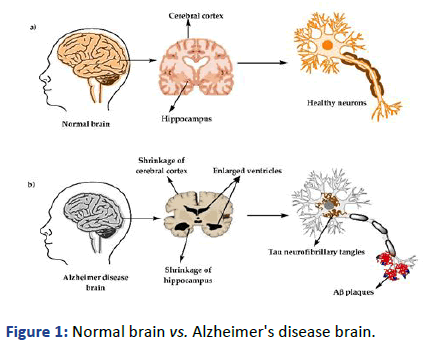
Figure 1: Normal brain vs. Alzheimer's disease brain.
Common symptoms of Alzheimer’s include memory loss, cognitive decline, impaired judgment, disorientation and confusion, difficulty with language and communication and changes in personality and behavior. As the disease progresses, individuals may have difficulty with daily activities and living, such as bathing, dressing and eating and may become increasingly dependent on others for their care.
The exact cause of Alzheimer’s disease is not fully understood and unfortunately, there is no cure yet. However, it is crucial to explore the various facets of Alzheimer's disease management and care, with one critical aspect being the rate of hospital readmissions. Often, patients, after being discharged from the hospital, return for treatment, usually due to complications or inadequate management of their condition; hospital readmissions pose a significant burden on the healthcare system and patients. Hospital readmissions also signal the potential gaps in the care and support provided to Alzheimer's patients [3].
A high readmission rate may indicate inadequate follow-up care or incomplete patient treatment and discharge instructions and it is frequently used as an indicator of hospital/provider care quality. The study aimed to identify potential modifiable variables and trends in the disease rates to provide insights that could help mitigate the burden of Alzheimer's disease on individuals, families and healthcare systems. This effort aligns with the broader goal of advancing our knowledge of Alzheimer's disease and improving the quality of life for aging populations. The article underscores the need for comprehensive healthcare strategies considering the interplay between the risk factors and care coordination and advocates for preventive measures that target chronic disease management and reduce hospital readmissions in aging populations [4].
Materials and Methods
Research questions
Prevalence rates
• Are there variations in the prevalence rates of Alzheimer's
disease by age, location, gender or ethnicity?
• Is there a significant regional or demographic pattern in
Alzheimer's disease prevalence rates among the study
population?
Hospital readmission rates
• Is there a notable variation in the hospital readmission
rates among individuals with Alzheimer's disease
compared to those with other chronic conditions?
• Are there significant patterns in Alzheimer's disease
hospital readmission rates among the study population
within specific locations or demographics?
Hypothesis
Null hypothesis (H0): There are no significant regional or
demographic variations in the prevalence rates or hospital
readmission rates of Alzheimer's disease.
Alternative hypothesis (H1): Alzheimer's disease prevalence
and hospital readmission rates exhibit significant differences
based on age, gender, ethnicity and geographical location.
Justification of study
Understanding Alzheimer's disease trends and reducing the
prevalence and preventable hospital readmissions are a
financial imperative and a measure of improving care quality
and delivery to enhance the efficiency of healthcare systems for
better patient outcomes. The study's outcomes collectively
provide a nuanced understanding of the various factors
influencing Alzheimer's disease prevalence and hospital
readmissions and provide actionable insights for policymakers
and healthcare practitioners to effectively address these
challenges.
Literature search
A comprehensive literature search was conducted across
multiple search engines, such as PubMed, Google Scholar,
ScienceDirect, AGS (American Geriatrics Society), Web of
Science and PsycINFO, using keywords such as Alzheimer's
disease, prevalence, hospital readmissions, individuals 65 and
older, risk factors, healthcare utilization, caregiver support and
health information exchange were utilized as inclusion criteria.
The search criteria were set to identify articles published within
the last decade, focusing on primary research studies,
systematic reviews and meta-analyses that examined
prevalence and hospital readmissions in the context of
Alzheimer's disease in the United States. This time restriction ensured that the study used and gathered up-to-date
information from original research and high-level
summaries of existing research. The study's extensive
literature search and review focused on delivering a
comprehensive perspective on the topic, which is essential for
identifying and addressing the disease’s complexities. The
study prioritized open-access articles, ensuring that the
information gathered is readily available to all researchers,
which can be especially valuable for transparent and
collaborative research [5].
This comprehensive literature review systematically
investigated and analyzed variations in the prevalence and
hospital readmission rates of Alzheimer's patients within the
demographics of individuals aged 65 and older. This review
aimed to identify and provide a comprehensive understanding
of the contributing factors responsible for these variations,
including demographic, clinical and healthcare system-related
factors. By integrating existing research, this review
contributes to a better understanding of the challenges and
opportunities in the early detection of Alzheimer's disease,
co-morbid conditions that increase the risk of the progression
of the disease and care and management for older adults with
dementia. Also, the review exposes the literature gaps and
informs future research and healthcare practices in this field
[6].
Prevalence
Dhana et al., conducted a population-focused study analyzing
cognitive data from the Chicago Health and Aging Project
(CHAP and combined that data with the National Center for
Health Statistics (NHCS 2020 bridged-race population
estimates [6]. Their study aimed to determine the prevalence
of Alzheimer's disease among individuals aged 65 and older,
providing estimates for both the national and regional levels,
including 50 US states and 3142 counties. The study results
indicated that the eastern and southeastern regions of the US
had a greater prevalence of AD, with the highest rates found
in Maryland (12.9%, New York (12.7% and Mississippi
(12.5%, based on the first-ever research of the disease's
occurrence by county. Texas, Florida and California states had
the largest populations of Americans with AD and the
counties with the highest prevalence of AD were Bronx
County, New York; Miami-Dade County, Florida; and Baltimore
City, Maryland [7].
The Dhana et al. study provides a rationale for the variations
in the prevalence of AD and increased occurrence in regions
with higher densities of older adults and black and hispanic
residents. The study recommends using state- and county-specific
estimates as a valuable tool in directing resources
toward public health programs and the development of
tailored care strategies to reduce the burden of Alzheimer's
disease. In conclusion, the existing literature supports the
study hypotheses and underscores the existing regional and
ethnic variations in Alzheimer's disease. Therefore, it is crucial
to recognize and address these variations and develop
targeted interventions that enhance our ability to comprehensively address the challenges posed by Alzheimer's
disease on a global scale [8].
Risk factors
Non-modifiable risk factors: Age, heredity, family history and
certain health conditions like Down syndrome, Huntington's
disease, Creutzfeldt-Jakob disease, Gerstmann-Straussler-Scheinker syndrome and fatal familial insomnia are
unmodifiable risk factors for the development of Alzheimer's
disease. According to the 2020 Alzheimer’s disease facts and
figures report, based on the data from the Chicago Health and
Aging Project (CHAP), approximately 5.8 million Americans
aged 65 and older were diagnosed with AD dementia in 2020.
Furthermore, this number is projected to increase within the
United States to reach 7.1 million by the year 2025 and 13.8
million by the year 2050, given that no significant medical
developments occur with regards to curing or delaying the
progression of AD. The results are consistent with the study's
initial hypothesis and results, underscoring the dire need for
breakthroughs in the field to enhance the quality of life of
individuals affected by the condition. Figure 2 illustrates
common modifiable and non-modifiable risk factors including
age, genetics, lifestyle and chronic conditions [9].
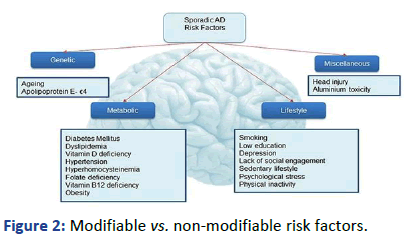
Figure 2: Modifiable vs. non-modifiable risk factors.
Modifiable risk factors
Diet: Various factors such as a person's socioeconomic status,
level of education, level of physical activity and diet, in
addition to other unmodifiable risk factors like aging and
genetics, can influence their risk of developing dementia. A
novel strategy was suggested by the researchers following a
health and retirement study (n=5,907) [17]. Research on the
effects of neuroprotective dietary strategies, the
Mediterranean diet (MedDiet) and the MIND diet (a
combination of the DASH (Dietary Approaches to Stop
Hypertension) and MedDiets) have shown that following
these diets has a positive impact on the cognitive health of
elderly individuals. Adherence to the MIND and MedDiet
diets has been directly linked to a lower risk of cognitive
impairment and improved cognitive function [10].
Physical activity: Physical activity plays a vital role in primary
and secondary prevention of CVD (Cardiovascular Disease)
by reducing the impact of the disease, delaying progression
and preventing recurrence. Similarly, regular physical activity prevents dementia due to AD and slows down the progression
of the disease. Engaging in aerobic physical activity is
especially beneficial for cardiovascular health. It enhances
endothelial function by inducing nitric oxide production,
reducing vascular inflammation and promoting vascular
regeneration. Studies have shown that individuals with some
physical activity had a 25%-38% lower risk of AD compared to
those without any activity, while those with increased physical
activity had a 33%-48% lower risk of AD [11].
The observational cohort study conducted by Dhana et al.,
analyzed the data from two projects, Chicago Health and
Aging Project (CHAP) (1,845 participants) and the rush
Memory and Aging Project (MAP) (920 participants), focusing
on Alzheimer's dementia. Over a median follow-up of 5.8
years for CHAP and 6.0 years for MAP, 379 and 229
participants, respectively, developed Alzheimer's dementia
[7]. After analyzing multivariable-adjusted models, the
researchers found that each additional healthy lifestyle factor
was associated with a 27% reduction in the risk of Alzheimer's
dementia. The key findings include a pooled Hazard Ratio (HR)
of 0.73 (95% CI 0.66-0.80) for Alzheimer's dementia per each
additional healthy lifestyle factor. Compared to individuals
with 0 to 1 healthy lifestyle factor, those with 2 to 3 factors
had a 37% lower risk (pooled HR 0.63, 95% CI 0.47-0.84) and
those with 4 to 5 factors had a 60% lower risk (pooled HR
0.40, 95% CI 0.28-0.56) of developing Alzheimer's disease.
The study findings complement our hypothesis that
adherence to a healthy lifestyle reduces the risk of a
neurodegenerative condition [12].
Chronic diseases
An increase in Alzheimer's disease and other neurological
disorders in the United States, more specifically, the rapid
advancement of dementia in these individuals has been
directly linked to the rise in age-related chronic diseases such
as cardiovascular disease, diabetes, high cholesterol, kidney
disease and cognitive impairment from brain injury/accidents
that accelerate the development and progression of
Alzheimer's disease [13].
Cardiovascular disease and Alzheimer's disease
Neuropathological studies suggest that the presence of
ischemic microvascular lesions is significantly higher in the
brains of patients diagnosed with Alzheimer's disease. The
incidence of neuropathologically confirmed Alzheimer's
disease cases was 11-fold higher in women who had cerebral
infarctions evident at autopsy. One of the biggest risk factors
for Alzheimer's disease has been proposed to be chronic
hypertension. Hypertension adversely affects the structural
integrity of cerebral blood vessels, forms atherosclerotic
plaques in cerebral arteries and induces hyperlipidemia.
Dementia risk may be decreased by antihypertensive
treatments and alterations in lifestyle. Active hypertension
medication decreased the risk of dementia by 50% as
compared to the control group in a double-blind, placebo-controlled
research. The study's findings support our
hypothesis on gender disparities in the prevalence of Alzheimer's disease and an increased risk associated with
chronic illnesses [14].
Diabetes and Alzheimer's disease
Alzheimer's diabetes or type 3 diabetes is characterized by
insulin resistance in the brain and has a significant impact on
neurocognition. T3D results from a brain condition in which
neurons lose their ability to react to insulin, a
neurotransmitter necessary for fundamental functions like
memory and learning. Nguyen et al., state that it is critical to
recognize T2DM as a risk factor that contributes to the buildup
of amyloid-β deposits (amyloidosis) in the brains of dementia
sufferers. The buildup of Aβ inside the neurons and ongoing
insulin exposure were linked in a harmful loop. The
intracellular domain of Amyloid Precursor Protein (APP), Aβ
protein and insulin are all regulated in vivo by the Insulin-Degrading Enzyme (IDE). Diabetes and Alzheimer's disease-related
insulin resistance can result in hyperinsulinemia, which
saturates Insulin-Degrading Enzymes (IDE) and prevents the
breakdown of Aβ and insulin. Because of altered glucose
metabolism and its dependence on cell death pathways,
insulin resistance or malfunction of insulin signaling (a
universal hallmark of type 2 diabetes) serves as the
foundation for the connection between T2D and Alzheimer's
disease [15].
The literature review highlights the intricate network of
factors that impact Alzheimer's disease and delves into a
deeper understanding of the disease's patterns. The aim is to
use this knowledge to create more targeted interventions or
policies for addressing Alzheimer's disease [16].
Hospital re-admissions
Patients with dementia exhibited a noticeably greater
readmission rate as compared to those without dementia and
all-cause 30-day readmission rates, which varied from 7% to
35%, were most observed among dementia patients. Kamdar
and colleagues conducted a retrospective cohort study and
analyzed the Michigan value collaborative data from 2012 to
2017, focusing on 722,911 hospitalization episodes, out of
which 66,676 were related to patients with Alzheimer's
Disease and Related Dementias (ADRD) and 656,235 were
related to patients without ADRD. After matching, within 30
days readmission rates were 21.5% for ADRD patients and
14.7% for non-ADRD patients. The 30-day readmission cost
was $467 higher for ADRD patients and total 30-day episode
costs were $2794 higher. The study's results align with our
hypothesis, underscoring the significance of comprehensive
assessments and clear discharge instructions for patients with
Alzheimer's disease and related dementia to reduce hospital
readmissions [17].
Bykovskyi and colleagues conducted a retrospective cohort
study using 100% medicare fee-for-service claims from all
2014 hospitalizations nationwide among medicare enrollees
with dementia. The study aimed to explore the relationship
between self-reported race (black, non-hispanic white) and
all-cause 30-day readmissions. The study involved 1,523,142
hospital stays among 945,481 beneficiaries and the results indicated that black beneficiaries had 37% higher readmission
odds compared to white beneficiaries, even after adjusting
numerous factors. The study findings suggest the association
between neighborhood disadvantage and readmissions varied
by race, highlighting racially patterned disparities in care that
contribute to the observed differences. In conclusion, the
study found significant racial and geographic disparities in 30-day readmission rates among medicare beneficiaries with
dementia diagnoses, with distinct mechanisms influencing
different subpopulations [18].
Hospital readmissions that can be prevented can be
decreased by various approaches, including identifying high-risk
patients, determining the clinical causes of index
hospitalization and readmission and instituting home-based,
tailored care provided by an interdisciplinary team.
Comprehensive assessment and care planning, including
follow-up and support, caregiver education and robust
discharge guidelines are strongly advised for this vulnerable
patient group to improve quality of life and reduce hospital
readmissions. Caregiver support and education are essential
for providing efficient care to individuals with Alzheimer's
disease and to reduce hospital readmissions since Alzheimer's
disease not only has a profound impact on those affected by
the disease but also on their families and caregivers [19].
Care coordination
Effective care coordination strategies can significantly
improve the quality of life and care received by individuals
suffering from Alzheimer's disease. Health Information
Technology (HIT) systems, such as Electronic Health Records
(EHRs), Health Information Exchanges (HIEs) and automated
notifications about care transitions, can effectively facilitate
care coordination. For instance, sending automated alerts to
primary care providers about ED (Emergency Department)
visits, hospital admissions and discharges may lower the
incidence of readmissions and preventable ED visits and
encourage timely follow-ups [20].
The Wang et al. study delved into the impact of hospital-adopted
Health Information Technology (HIT) on reducing
preventable Emergency Department (ED) visits for patients
with Alzheimer’s Disease and Related Dementias (ADRD). The
study aimed to illustrate the association between hospital-based
HIT care coordination strategies and patient
engagement strategies and the rate of preventable ED visits
for older adults with ADRD. Since there was limited existing
literature on the topic, the study utilized data from various
sources, including patient-level data from 2015 State
Emergency Department Databases (SEED), county-level data
from the 2015 Area Health Resources File (AHRF), hospital-level
organizational and HIT data from the 2015 American
Hospital Association Annual Survey Information Technology
supplement (AHAIT). The researchers focused on seven states,
AZ, FL, KY, MD, NC, VT and WI, due to the availability of
necessary variables and linkage to hospital and county data
[21].
The key findings from the Wang et al. study indicate that
hospitals employing HIT functionalities, such as using electronic patient health information from outside providers,
providing electronic notifications to the patient's primary care
physician and implementing HIT patient engagement
strategies, were associated with significantly lower rates of
preventable ED visits for ADRD patients. The researchers
suggest that specific HIT features fostering communication
and information exchange among patients, caregivers and
providers can play a crucial role in reducing preventable ED
visits for individuals with complex health needs. The findings
support the study hypothesis that HIT functionalities
promoting care coordination and patient engagement can
lead to better outcomes for ADRD patients, contributing
valuable insights to the existing literature on the subject [22].
Methodologies employed
The predominant methodologies in the reviewed literature
reveal a prevalence of retrospective studies, retrospective
cohort studies and systematic reviews. Retrospective studies
in the literature review involved analyses of historical patient
health data from national or regional health repositories and
the data from surveys or research findings to gain insights into
historical trends, patterns or outcomes. Descriptive statistics
and regression analyses were the prevalent methodological
approaches used within this field. Descriptive statistics were
used to summarize and describe the key features of data and
regression analyses were used to explore the causal
relationships between variables, indicating a quantitative
approach to data analysis [23].
Analysis of work relevance
The literature review findings are consistent with our initial
hypothesis regarding gender, regional and racial disparities in
the prevalence and hospital readmission rates. The literature
review reinforces the importance of adhering to a healthy
lifestyle to reduce the risk of neurodegenerative conditions. It
also highlights the impact of disadvantaged neighborhoods on
hospital readmissions. Additionally, the literature emphasizes
the benefits of Health Information Exchange (HIE) adoption,
for better care coordination and improved communication to
achieve better patient outcomes. The current literature
review findings consistently support our original hypothesis
and align with the anticipated study outcomes. This
underscores the urgent need for breakthroughs in the field to
enhance the quality of life of individuals affected by
neurodegenerative conditions [24].
The insights from the existing literature emphasize the critical
role of addressing health and healthcare disparities,
promoting healthy lifestyles and embracing advanced
healthcare technologies to enhance patient care and
outcomes. The literature review and the study objective
harmonize with the evolving healthcare landscape, embracing
futuristic models that integrate electronic health records. The
emphasis on promoting health information exchange and
employing health informatics strategies reflects a dedication
to improving care coordination, aiming for high-quality care
and improved patient outcomes [25].
Research methodology
Building upon the insights gained from the comprehensive
literature review, the study aimed to address the gaps
identified and contribute new findings to the existing body of
knowledge. In this section, we describe the methodology,
participant selection process, data collection and cleaning
procedures and statistical analyses employed to thoroughly
investigate the prevalence of Alzheimer's disease and hospital
readmission rates based on key variables [26].
Research design
The study adopted a retrospective cohort design to examine
Alzheimer's disease prevalence and hospital readmission rates
in the United States. Retrospective design was more efficient
and cost-effective than prospective designs because the data
already exists and the researchers were able to access a large
amount of information virtually from any location without the
need for additional data collection. The study applied
quantitative methods and used a combination of Exploratory
Data Analysis (EDA) and inferential analysis techniques like
correlation, regression and ANOVA to analyze the dataset and
test the hypotheses to unveil insights from our dataset [27].
Data source and retrieval
This retrospective cohort study analyzed the specific chronic
conditions data from the year 2018 obtained from the CMS
(Centers for Medicare and Medicaid Services) chronic
conditions data warehouse, which included administrative
enrollment and claims information for original medicare
members. Pre-defined indicators for both mental health and
chronic diseases were available in the CMS CCW (Chronic
Conditions Data Warehouse) database. Data on 21 specific
chronic conditions identified based upon ICD-10
(International Classification of Diseases) codes among original
medicare participants was available in the specific chronic
conditions dataset. The dataset included data on the
prevalence and hospital readmission rates, ER visits and
medicare payments for various chronic diseases, including
Alzheimer's disease, categorized by age, gender, region and
beneficiary status. The study used de-identified data, ensuring
that any personal information that could lead to the
identification of individual participants has been removed to
protect the privacy and confidentiality of the study
participants. The study analyzed data from a specific year
(2018) and established a baseline for understanding the
prevalence and readmission rates during that period. This
baseline can serve as a reference point for future comparisons
and analyses [28].
Justification of study design
The study aimed to provide insights into the significant
disparities in the prevalence and hospital readmission rates of
Alzheimer's disease across various states nationwide, as well
as demographic variations. The researcher's primary goal was
to identify and understand these significant variations for
targeted interventions and policy enhancements [29].
Cohort selection
The study commenced with the deliberate selection of the
study group, chosen based on specific criteria related to the
disease and then further data mining was done to ensure
homogeneity and enhance the dataset's consistency concerning
the condition. The study focused on evaluating both the
prevalence and hospital readmission rates, stratified by age,
gender, ethnicity and location. This targeted approach allows
for a nuanced examination of potential patterns and variations
in healthcare outcomes across different demographic and
geographic categories within the cohort. The study also focused
on people aged 65 and older, which corresponds to the typical
age range for Alzheimer's disease. This cohort selection ensures
a concentrated exploration of the condition within the broader
dataset [30].
Data analysis
Data cleaning and preprocessing: The study used Microsoft
Excel and R studio to analyze the CMS Alzheimer's dataset
from 2018. First, we examined the dataset's structure and
identified missing values. In our initial assessment, we
observed that the dataset contains 11,244 observations
across 12 variables, with 30,974 missing values. Notably,
variables such as Prvlnc, Tot_Mdcr_Stdzd_Pymt_PC,
Tot_Mdcr_Pymt_PC, Hosp_Readmsn_Rate and
ER_Visits_Per_1000_Benes exhibited significant instances of
missing data. To ensure our analysis's integrity, we removed
the missing values in the Prvlnc variable, followed by a similar
approach for Hosp_Readmsn_Rate, before performing
descriptive statistics. Additional data preprocessing stages
involved addressing inconsistencies, encoding categorical
variables, dealing with outliers, transforming historical data
and dividing data for validation. These processes are critical
for assuring data quality and preparing the dataset for
subsequent analysis in the study [31].
After removing rows with missing values in the prevalence
column (Prvlnc), our dataset comprised 9,326 observations.
We then examined the distribution of data across different
geographic levels. The majority of observations were at the
county level (7,827 observations), followed by the state level
(1,469 observations), with a smaller subset at the national
level (30 observations). Subsequently, we analyzed hospital
readmissions data, which consisted of 54 observations
distributed across different geographic levels. Notably, most
of these observations were at the state level (53), with only
one at the National level. To gain deeper insights into the
data, we proceeded with the summary statistics to assess the
percentage of prevalence and hospital readmission rates by
location [32].
Descriptive analysis
Descriptive statistics, including measures of central tendency
(mean, median, mode), dispersion (range, variance, standard
deviation, IQR (Inter Quartile Range), MAD (Mean Absolute
Deviation)), quartiles and percentiles, were employed to
aggregate the prevalence and readmission rates of
Alzheimer's disease, which offer a foundational understanding of the data's characteristics. The descriptive statistics provided
a concise summary of the data and helped to understand the
variables' central tendency and distribution.
Geospatial analysis
Geographic variations were assessed through geospatial
analyses using Tableau to explore region-specific patterns and
contribute valuable insights into the regional dynamics of
Alzheimer's disease prevalence and hospital readmission
rates. The study aimed to identify spatial trends, clusters or
disparities across different geographic locations and present
the findings with clear visualizations for easy comprehension
for key stakeholders [33].
Subgroup analysis
The study conducted a detailed subgroup analysis based on
gender and ethnicity to unveil further insights into the
prevalence rates of Alzheimer's disease. By segregating the
data according to gender and ethnicity, the analysis aimed to
discern potential variations and patterns specific to different
populations and provide a more comprehensive
understanding of how Alzheimer's disease manifests and
influences healthcare outcomes differently. The gender- and
ethnicity-stratified approaches enhanced the granularity of
our investigation.
Inferential analysis
Correlation analysis: The study used correlation analysis to
explore the relationships among key independent variables,
age, gender and location and the prevalence rates of the
outcome variable, Alzheimer's disease. The study aimed to
identify potential correlations to understand the intricate
dynamics between these variables and the observed rates of
Alzheimer's disease within the studied population [34].
Regression analysis: Building upon the insights gained from
correlation analysis, the study employed regression analysis
to quantify and model the associations between the
dependent and the key independent variables. The study
aimed to offer insights into the multifaceted factors that
influence the prevalence of Alzheimer's disease in different
demographic contexts. This analytical approach goes beyond
correlation, letting us assess the strength and direction of
relationships and predict the impact of these demographic
factors on disease prevalence. The regression analysis results
provide a more robust understanding of the nuanced
relationships among these variables, offering predictive
insights into how demographic factors may influence the
prevalence rates of Alzheimer's disease in different
demographic contexts.
ANOVA analysis: Finally, the study employed ANOVA analysis
to compare the mean prevalence rates across diverse
demographic groups. This statistical approach allowed us to
identify the significant differences in prevalence rates
between these groups, thereby providing insights into the
potential influence of demographic factors on disease
prevalence. This comprehensive analysis enabled us to gain a nuanced understanding of the epidemiology of Alzheimer's
disease, providing essential information for targeted
interventions and policy development [35].
Statistical software and tools
The study used a combination of Microsoft Excel, RStudio,
Tableau and Power BI for comprehensive data analysis.
Microsoft Excel was employed for initial data management,
data organization, data cleaning and basic statistical analysis.
Its user-friendly interface was very useful for preliminary data
exploration and fundamental calculations. RStudio, a
programming language and software environment specialized
for statistical computing and graphics, provided a high level of
flexibility for advanced statistical applications. Tableau and
Power BI played a crucial role in transforming the data into
dynamic and interactive visualizations, aiding in exploring
geographic patterns in the study and enhancing the
comprehension of intricate datasets for researchers and
audiences. This combination of statistical tools ensured a
robust approach to data analysis, balancing statistical rigor
with effective communication through meaningful
visualizations.
Ethical considerations
The study utilized de-identified data from the 2018 specific
chronic conditions data sourced from the CMS chronic
conditions data warehouse. Before starting the research, the
Institutional Review Board (IRB) approval was obtained from
the Harrisburg University of Science and Technology. The
researchers provided a comprehensive overview of the
study's purpose, methodologies and the utilization of de-identified
CMS data during the IRB application process. The
IRB approval emphasizes the research team’s commitment to
ethical practices, prioritizing participants' confidentiality,
credibility and reliability of the study by adhering to relevant
guidelines governing the use of healthcare data [36].
Results
Alzheimer's disease/Dementia has an average prevalence rate of 10.22%, ranking it among the higher prevalence conditions. AD (Alzheimer's Disease) also has a high average hospital readmission rate of 21.25% (Figure 3).
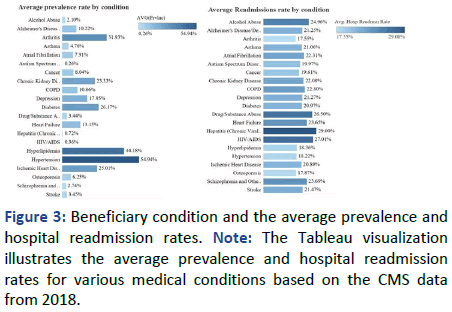
Figure 3: Beneficiary condition and the average prevalence and hospital readmission rates.
Note: The Tableau visualization illustrates the average prevalence and hospital readmission rates for various medical conditions based on the CMS data from 2018.
Descriptive statistics
Table 1 provides a comprehensive overview of Alzheimer's disease prevalence rates at National, state and county levels, presenting key descriptive statistics by location. This comprehensive analysis provides valuable insights into the distribution and variability of prevalence within each geographic location. At the state level, the prevalence rate has a central tendency with a mean of 0.0917, revealing a positively skewed distribution with potential outliers and non-normality.
The variability ranges from 0.000 to 0.3915, with a precise mean estimate indicated by the 95% confidence interval (0.0889 to 0.0946). The table summarizes prevalence rates statistics by various geographic locations and offers insights into central tendency, dispersion and distribution, with the confidence interval adding precision to the mean estimate and quartiles providing additional measures of central tendency. Analyzing the data across national, state and county levels yields distinct insights and highlights the necessity of more in-depth analyses for a comprehensive understanding of Alzheimer's prevalence.
| Prevalence |
National |
State |
County |
| Mean |
0.097 |
0.091 |
0.088 |
| Median |
0.102 |
0.086 |
0.095 |
| Mode |
0.029 |
0.0319 |
0 |
| Minimum |
0.029 |
0 |
0 |
| Maximum |
0.293 |
0.3915 |
0.3206 |
| Range |
0.2643 |
0.3915 |
0.3206 |
| Standard deviation |
0.054 |
0.056 |
0.038 |
| Standard error |
0.0099 |
0.0015 |
0.0004 |
| Sample variance |
0.0029 |
0.0031 |
0.0014 |
| Kurtosis |
6.7378 |
9.0945 |
3.0291 |
| Skewness |
1.47 |
1.962 |
-0.075 |
| Lower bound CI |
0.077 |
0.088 |
0.087 |
| Upper bound CI |
0.118 |
0.095 |
0.089 |
| Note: Descriptive statistics for Alzheimer’s disease prevalence rates across all demographic groups at the national level, including the 50 states, the district of Columbia, Puerto Rico, the Virgin Islands and at the county level |
Table 1: Descriptive statistics of Alzheimer's disease prevalence rates by location.
Table 2 provides crucial insights into hospital readmission rates across 50 states and territories. The mean readmission rate is 21.22%, with a median and mode at 21.55% and 21.53%, respectively. The range of 15.96% to 25.83% signifies variability, while the skewness of -0.2260 suggests a slightly left-skewed distribution, indicating that whilem ost states have higher readmission rates, there are a few states with lower rates. The study highlights the need for further analysis to focus on both ends of the spectrum to understand the disparities andd evelop targeted interventions to reduce readmission rates. The kurtosis value of 2.4630 indicates a moderately peaked distribution, suggesting a clustering of states around the average readmission rate. The Confidence Interval (CI) for the mean (Lower bound: 20.55%, upper bound: 21.89%) adds precision to the estimate, considering the variability in the data. This comprehensive analysis enhances our understanding of Alzheimer's prevalence and hospital readmission rates across diverse geographic levels and highlights variations in state performance.
| Readmissions rates |
Value |
| Mean |
0.2122 |
| Median |
0.2155 |
| Mode |
0.2153 |
| Minimum |
0.1596 |
| Maximum |
0.2583 |
| Range |
0.0987 |
| Standard deviation |
0.0241 |
| Standard error |
0.0033 |
| Sample variance |
0.00059 |
| Kurtosis |
2.463 |
| Skewness |
-0.226 |
| Lower bound CI |
0.2055 |
| Upper bound CI |
0.2189 |
| Note: Hospital readmissions data from 50 states and the district of Columbia, Puerto Rico and the Virgin islands, including all age groups and all demographic levels. The data for hospital readmission rates is primarily available at the state level, with only one observation at the national level |
Table 2: Alzheimer's disease hospital readmissions rates descriptive statistics.
Geospatial analysis
The geospatial analysis of Alzheimer's disease prevalence rates across various locations, as shown in Figure 4, reveals significant disparities between states. In terms of overall prevalence encompassing all age groups, west Virginia has the highest at 16.97%, closely followed by Florida, New Jersey, Alabama, Kentucky, Delaware, Louisiana and Mississippi, all exceeding 16%. On the other hand, Alaska exhibits the lowest prevalence at 11.73%, alongside Oregon, Washington, Colorado, Vermont, Montana, Minnesota, Wyoming, the Virgin Islands and New Mexico, all below 13%. However, focusing on the 65+ age group, Puerto Rico tops the list with 19.55%, followed by West Virginia, Alabama, Florida and several others, surpassing 17%. Conversely, Alaska reports the lowest prevalence at 12.16%, along with Oregon and Colorado, both below 13% (Figure 5).
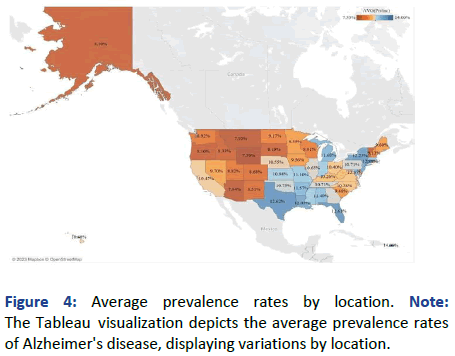
Figure 4: Average prevalence rates by location.
Note: The Tableau visualization depicts the average prevalence rates of Alzheimer's disease, displaying variations by location.
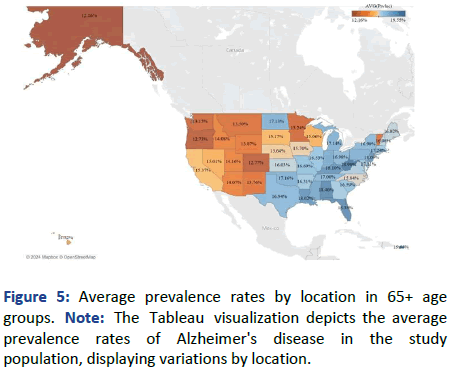
Figure 5: Average prevalence rates by location in 65+ age groups.
Note: The Tableau visualization depicts the average prevalence rates of Alzheimer's disease in the study population, displaying variations by location.
The hospital readmission rates for Alzheimer's disease present a different picture compared to the above results as shown in Figure 6. The Virgin islands exhibit the highest readmission rate at 25.83%, followed by Nevada, DC, Massachusetts, Maryland and West Virginia, all exceeding 24%. On the other hand, Hawaii records the lowest readmission rate at 15.96%, accompanied by Montana, Utah and Wyoming, all below 18%. These findings underscore the multifaceted nature of Alzheimer's disease management, where geographical variations play a significant role in prevalence and healthcare outcomes.

Figure 6: Average hospital readmissions rates by location.
Note: The Tableau visualization depicts the average hospital readmission rates of Alzheimer's disease by location.
Subgroup analysis
The subgroup analysis of Alzheimer's disease prevalence rates provided comprehensive insights into demographic disparities across age, gender, location and ethnicity. The data visualization (Figure 7) highlights that prevalence rates notably vary by age (2833 observations in both the age groups of 65+ and <65), with individuals aged 65 and above exhibiting significantly higher rates (11.92%) compared to the overall average rates across all age groups (10.18%). Gender disparities, as shown in Figure 8 (54 observations in each group), reveal that females aged 65 and above have a markedly higher prevalence rate (12.81%) than males (9.56%). Further analysis (Figure 9), focusing on the 65+ age group, uncovers variations in prevalence rates by location and gender, with the highest rates observed in men in DC (14%) and women in Puerto Rico (19%), while the Virgin Islands have the lowest rates for both genders.
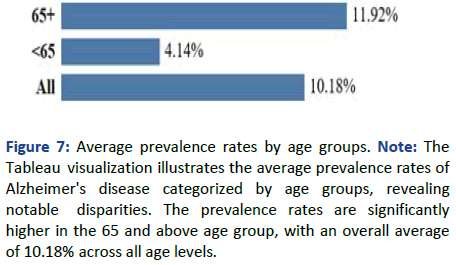
Figure 7: Average prevalence rates by age groups.
Note: The Tableau visualization illustrates the average prevalence rates of Alzheimer's disease categorized by age groups, revealing notable disparities. The prevalence rates are significantly higher in the 65 and above age group, with an overall average of 10.18% across all age levels.
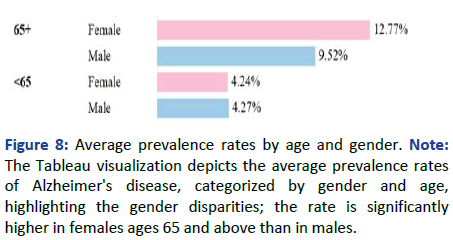
Figure 8: Average prevalence rates by age and gender.
Note: The Tableau visualization depicts the average prevalence rates of Alzheimer's disease, categorized by gender and age, highlighting the gender disparities; the rate is significantly higher in females ages 65 and above than in males.
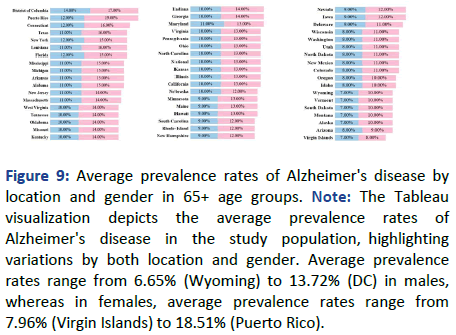
Figure 9: Average prevalence rates of Alzheimer's disease by location and gender in 65+ age groups.
Note: The Tableau visualization depicts the average prevalence rates of Alzheimer's disease in the study population, highlighting variations by both location and gender. Average prevalence rates range from 6.65% (Wyoming) to 13.72% (DC) in males, whereas in females, average prevalence rates range from 7.96% (Virgin Islands) to 18.51% (Puerto Rico).
Additionally, Figure 10 illustrates variations in prevalence rates among different ethnic groups, with non-hispanic black individuals exhibiting the highest rate (13.93%), followed by native Americans (12.94%), non-hispanic whites (11.12%), hispanics (10.55%) and the lowest rates among Asian Pacific Islanders (8.95%). Figure 11 provides more information on ethnicity and location-specific findings in the 65+ age group, highlighting further disparities. Notably, hispanics have the highest Alzheimer's disease prevalence rate in Florida (22%), native Americans show the highest rate in North Carolina (19%) and non-hispanic blacks have the highest at 19% in Michigan and DC. Non-hispanic whites have the highest at 14%, observed in Louisiana, CT and Alabama and Asian Pacific Islanders exhibit the highest rate at 15% in only one state, NY. Figure 11 indicates that the average prevalence rates among whites are severe when compared to other ethnicities. The demographic and regional variations in Alzheimer's disease prevalence and variations in readmission rates support our hypothesis and literature review findings. The study focused on Alzheimer's disease prevalence for additional insights into the complex interplay of demographic factors in Alzheimer's disease prevalence.
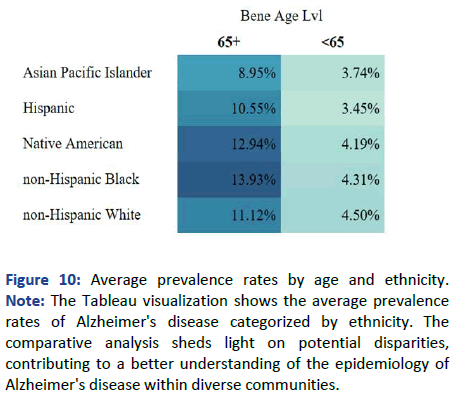
Figure 10: Average prevalence rates by age and ethnicity.
Note: The Tableau visualization shows the average prevalence rates of Alzheimer's disease categorized by ethnicity. The comparative analysis sheds light on potential disparities, contributing to a better understanding of the epidemiology of Alzheimer's disease within diverse communities.

Figure 11: Average prevalence rates by ethnicity and location in 65+ age groups.
Note: The Tableau visualization presents an analysis of average prevalence rates of Alzheimer's disease among various ethnic groups, further stratified by location within the 65+ age group.
Inferential analysis
After exploring descriptive statistics, geospatial and subgroup analysis, we transitioned to inferential analysis to delve deeper into the strength and type of relationships between variables and Alzheimer's disease prevalence rates. The correlation analysis revealed significant but modest correlations among the variables of interest related to Alzheimer's disease prevalence rates. One notable finding was a positive correlation (r=0.1828) between age and Alzheimer's disease prevalence rates, indicating that certain age groups may be more susceptible to the disease. This implies that as individuals age, there is a corresponding increase in the prevalence of Alzheimer's disease. Additionally, the correlation between demographic description (which includes both gender and race) and Alzheimer's disease prevalence rates was found to be positive but weak (r=0.0584). The weak correlation with demographic description suggests that variables such as gender and race may also contribute to the disease's prevalence.
The study employed generalized logistic regression analysis to investigate the impact of age and demographic description on Alzheimer's disease prevalence rates. The analysis revealed significant associations between age, demographic description, and Alzheimer's disease prevalence rates. Age demonstrated a strong positive correlation with prevalence rates (β=0.0083, p<0.001), indicating that as individuals age, the likelihood of Alzheimer's disease prevalence increases. Additionally, demographic description displayed a notable positive association with prevalence rates (β=0.0009, p=0.0342), emphasizing its importance in understanding the disease's prevalence patterns. These findings underscore the critical role of age and demographic factors in elucidating Alzheimer's disease epidemiology, providing valuable insights that support our hypothesis and literature review.
Additionally, ANOVA analysis was employed to assess the variation in Alzheimer's disease prevalence rates across different age groups and demographic descriptions. The results revealed significant differences in prevalence rates across different age groups and demographic descriptions. In terms of age group analysis, the F-value of 963.5 (p<0.001) indicated a substantial influence of age on disease prevalence, suggesting that as individuals age, the likelihood of Alzheimer's disease increases significantly. Similarly, demographic descriptions also exhibited notable variations in prevalence rates, as indicated by an F-value of 11.98 (p<0.001). ANOVA findings underscore the significant roles played by both age and demographic factors in shaping Alzheimer's disease prevalence within populations.
Discussion
Our research study revealed an average Alzheimer's
prevalence rate of 10.22% and a 21.25% average hospital
readmission rate in the general population. These rates
indicate the severity and complexity of the condition and the
challenges in the management of the condition once
diagnosed and highlight the significant impact on healthcare
utilization compared to other conditions. The consistently
higher hospital readmission rates compared to prevalence
rates highlight a potential gap in the continuity of care and
the need for enhanced care coordination and post-discharge
support for individuals with Alzheimer's. Descriptive statistics
by location highlight central tendency and variability in
Alzheimer's prevalence rates across national, state and county
levels. The positively skewed distribution of prevalence rates
at the state level suggests potential outliers and non-normality,
indicating the need for further investigation into
underlying factors contributing to these disparities. Similarly,
hospital readmission rates exhibit variability across different
states and territories, underscoring the necessity for targeted
interventions to address disparities for better healthcare
outcomes.
Geospatial analysis visually depicts the variations in
prevalence and hospital readmission rates across different
geographic regions. These visualizations provide valuable
insights into the spatial distribution of the disease, enabling
policymakers and healthcare providers to allocate resources
and tailor interventions to specific regions. Subgroup analysis
reveals demographic disparities, with higher prevalence rates
among individuals aged 65 and above, particularly among
females. Ethnic disparities are also evident, with non-hispanic
black individuals exhibiting the highest prevalence rates.
However, when considering location, Alzheimer's disease
shows the highest prevalence rate of 22%, in hispanics,
indicating the influence of both demographic and geographic
factors on disease occurrence.
Inferential analysis indicates a positive correlation between
age and Alzheimer's prevalence rates, highlighting the
significant role of age in disease occurrence. However, the
positive but weak correlation between demographic
description and prevalence rates suggests that there are other
contributing factors beyond gender and race. Regression
analysis further confirms the positive correlation between age
and prevalence rates, emphasizing the critical role of age in
understanding the epidemiology of Alzheimer's disease.
Additionally, ANOVA analysis findings underscore the
significant influence of both age and demographic factors on
disease prevalence within populations. While correlation
analysis provides valuable insights into potential associations between variables, it is essential to recognize that correlation
does not imply causation. Further investigation is needed to
determine causality accurately, considering confounding
factors. Overall, correlation, regression and ANOVA strategies
collectively provide a comprehensive understanding of the
relationships between variables and Alzheimer's disease
prevalence rates, shedding light on the factors that may
contribute to the disease's occurrence within diverse
populations. Inferential analysis findings support and
complement the results obtained from descriptive, geospatial
and subgroup analyses, enhancing our overall understanding
of Alzheimer's disease epidemiology. The study findings
provided compelling evidence to reject the null hypothesis,
indicating significant differences in Alzheimer's disease
prevalence rates across various age groups and demographic
descriptions.
Real-world implications of the study findings are significant
for better healthcare practices and policy development to
improve outcomes. Understanding demographic and
geographic disparities in Alzheimer's prevalence rates is
crucial for targeted interventions, resource allocation and
effective prevention and management strategies for
Alzheimer's disease.
Strengths
This retrospective study is well-defined and has a clear focus
with precise and measurable research questions and
hypotheses. The study comprehensively examines both the
prevalence and hospital readmission rates, presenting a
holistic perspective on the impact of Alzheimer's disease. The
research design considers essential demographic factors such
as age, gender and location, which contributes to a nuanced
understanding of the condition. The research directly
addresses a major public health concern and holds the
potential to generate valuable insights for healthcare
planning, targeted interventions and resource allocation.
Limitations
This study is limited by the aggregate usage of percentages
rather than individual-level records containing comprehensive
variables such as age, location, gender, ethnicity, lifestyle and
other concomitant comorbid illnesses data. This limitation
restricts the depth of our analysis and may obscure important
patterns or correlations in the context of AD prevalence and
hospital readmissions. Access to individual health records is
essential for conducting a more precise analysis and could
provide a more nuanced understanding of the factors
contributing to hospital readmissions.
Furthermore, this study is limited by the absence of
information on the hospital readmission rates in individuals
aged 65 and above, demographic details and the concomitant
or comorbid illnesses that could potentially account for
hospitable readmissions in the data.
Additional information regarding primary care accessibility,
which could contribute to the variations in incidence,
prevalence or hospital readmissions across different regions is
another limitation. It is not clear if the results can be applied
to a larger population or globally, further limiting the scope of
the study.
Recommendations and future directions
Even with the best care possible, not all diseases or
readmissions can be prevented. As a starting point, it is
imperative to prioritize the reduction of readmissions as a
preliminary goal. Assessing the economic impact of disease
and hospital readmissions is necessary for informing
strategies to mitigate healthcare costs and enhance care
coordination. Table 3 outlines potential avenues for
future research, focusing on healthcare utilization metrics
related to beneficiary conditions, socio-economic
determinants, disease prevalence and hospital readmission
rates.
| Bene cond |
Avg. Hosp Readmsn.. |
Avg. Tot Mder Py.. |
Avg. ER Visits Pe.. |
| Alcohol abuse |
26.05% |
26841 |
2291 |
| Alzheimer's disease/Dementia |
22.29% |
26896 |
1545 |
| Arthritis |
18.43% |
16890 |
1014 |
| Asthma |
22.12% |
22389 |
1675 |
| Atrial fibrillation |
23.10% |
27124 |
1500 |
| Autism spectrum disorders |
20.89% |
8894 |
1153 |
| Cancer |
20.24% |
21795 |
1019 |
| Chronic kidney disease |
22.75% |
23983 |
1358 |
| COPD |
23.64% |
27255 |
1737 |
| Depression |
22.09% |
21811 |
1462 |
| Diabetes |
21.88% |
17380 |
1027 |
| Drug/Substance abuse |
27.78% |
26301 |
2482 |
| Heart failure |
24.44% |
30940 |
1731 |
| Hepatitis (Chronic Viral B and C) |
30.36% |
28015 |
1972 |
| HIV/AIDS |
28.58% |
21093 |
1522 |
| Hyperlipidemia |
19.03% |
14970 |
886 |
| Hypertension |
18.91% |
15514 |
948 |
| Ischemic heart disease |
21.57% |
21138 |
1234 |
| Osteoporosis |
18.44% |
18948 |
1040 |
| Schizophrenia and other Psyc… |
24.95% |
23875 |
2047 |
| Stroke |
22.56% |
34627 |
1991 |
| Note: The Tableau visualization provides a comprehensive overview of Healthcare Utilization Metrics for Various Conditions, offering valuable insights into the healthcare landscape and resource allocation. |
Table 3: Healthcare utilization metrics.
Understanding these factors is vital for refining intervention
and care coordination strategies, particularly in the context of
medicare funding. By investigating these areas, policymakers
and healthcare professionals can develop more efficient and
equitable healthcare systems tailored to the needs of aging
populations, mitigate the economic burden and improve
overall healthcare outcomes.
The research findings also emphasize the need for a proactive
approach focusing on futuristic healthcare strategies,
comprehensive care coordination programs, caregiver support
and enhanced patient-provider communication strategies to
improve health outcomes.
Alzheimer's disease research holds promise in diverse areas.
Exploring health information exchange's role in disease
management, investigating EHR (Electronic Health Records)
adoption's impact on readmission rates and assessing
telehealth interventions for patient and caregiver support are
key avenues. Early detection possibilities through AI-driven
analysis of writing and driving patterns present exciting
prospects. Concurrent analysis of various data sources,
alongside AI (Artificial Intelligence) and ML (Machine
Learning) applications, can provide an integrated approach to
understanding and treating Alzheimer's.
Conclusion
In conclusion, our study enhances our understanding of
Alzheimer's disease epidemiology, uncovering insights into
prevalence, hospital readmission rates and demographic
variations across diverse populations. Through rigorous
statistical methods, we validate our hypotheses and
contribute to the existing literature, advancing our knowledge
of this complex condition. The study's findings underscore the
need for further research, considering significant factors such
as socioeconomic status, lifestyle, health status, healthcare access and care coordination. Comprehensive and tailored
interventions are crucial to address the complex challenges
posed by Alzheimer's disease. By elucidating the factors
influencing disease prevalence and healthcare outcomes, the
study informs public health initiatives aimed at improving the
well-being of affected individuals and communities. However,
additional research and collaboration are essential to refine
our understanding and implement evidence-based
interventions for effective prevention, treatment and
management strategies.
Ethical Approval
This study utilized de-identified data from the CMS chronic
conditions data warehouse. Ethical approval was obtained
from the Institutional Review Board (IRB) of Harrisburg
University of Science and Technology. The research adhered
to the guidelines provided by the IRB to ensure participant
confidentiality and data integrity.
Conflict of Interest
No conflict of interest was reported.
Funding
No funding was received for this study.
Availability of Data and Materials
The datasets generated and/or analyzed during the current
study are publicly available from the Centers for Medicare and
Medicaid Services (CMS) chronic conditions data warehouse.
Acknowledgement
The author would like to thank Dr. Ingrid Vasiliu-Feltes MD,
EMBA, FAPA, FACHE, (Professor, Healthcare Informatics,
Harrisburg University of Science and Technology, Harrisburg,
PA, USA) for her critical review of the manuscript and
assistance in finalizing the draft.
References
- Alzheimer's Association, Thies W, Bleiler L (2013) Alzheimer's disease facts and figures. Alzheimers Dement. 9(2):208-245.
[Crossref] [Google Scholar]
- Breijyeh Z, Karaman R (2020) Comprehensive review on Alzheimer’s disease: causes and treatment. Molecules. 25(24):5789.
[Crossref] [Google Scholar] [PubMed]
- Gilmore-Bykovskyi A, Zuelsdorff M, Block L, Golden B, Kaiksow F, et al (2023) Disparities in 30-day readmission rates among Medicare enrollees with dementia. J Am Geriatr Soc. 71(7):2194-2207.
[Crossref] [Google Scholar] [PubMed]
- Centers for Disease Control and Prevention (2023) FASTSTATS-leading causes of death. Centers for Disease Control and Prevention.
- Chen J, Buchongo P, Spencer MR, Reynolds III CF (2022) An HIT-supported care coordination framework for reducing structural racism and discrimination for patients with ADRD. Am J Geriatr Psychiatry. 30(11):1171-1179.
[Crossref] [Google Scholar] [PubMed]
- Dhana K, Beck T, Desai P, Wilson RS, Evans DA, et al. (2023) Prevalence of Alzheimer's disease dementia in the 50 US states and 3142 counties: A population estimate using the 2020 bridged-race postcensal from the National Center for Health Statistics. Alzheimer's Dementia. 19(10):4388-4395.
[Crossref] [Google Scholar] [PubMed]
- Dhana K, Evans DA, Rajan KB, Bennett DA, Morris MC (2020) Healthy lifestyle and the risk of Alzheimer dementia: Findings from 2 longitudinal studies. Neurology. 95(4):374-383.
[Crossref] [Google Scholar] [PubMed]
- Godard-Sebillotte C, Strumpf E, Sourial N, Rochette L, Pelletier E, et al. (2021) Primary care continuity and potentially avoidable hospitalization in persons with dementia. J Am Geriatr Soc. 69(5):1208-1220.
[Crossref] [Google Scholar] [PubMed]
- Hospital readmissions - glossary. Hospital Readmissions - Glossary | HealthCare.gov (2023).
- James HO, Trivedi AN, Meyers DJ (2023) Medicare Advantage Enrollment and Disenrollment Among Persons with Alzheimer Disease and Related Dementias. JAMA Health Forum 4(9).
[Crossref] [Google Scholar] [PubMed]
- Kamdar N, Syrjamaki J, Aikens JE, Mahmoudi E (2023) Readmission rates and episode costs for alzheimer disease and related dementias across hospitals in a statewide collaborative. JAMA Network Open. 6(3):e232109.
[Crossref] [Google Scholar] [PubMed]
- Kosar CM, Mor V, Werner RM, Rahman M (2023) Risk of discharge to lower-quality nursing homes among hospitalized older adults with Alzheimer disease and related dementias. JAMA Network Open. 6(2):e2255134.
[Crossref] [Google Scholar] [PubMed]
- Kovaleva MA, Kleinpell R, Dietrich MS, Jones AC, Boon JT, et al. (2023) Caregivers’ experience with Tele-Savvy Caregiver Program post-hospitalization. Geriatr Nurs. 51:156-166.
[Crossref] [Google Scholar] [PubMed]
- Knox S, Downer B, Haas A, Middleton A, Ottenbacher KJ (2020) Dementia severity associated with increased risk of potentially preventable readmissions during home health care. J Am Med Dir Assoc. 21(4):519-524.
[Crossref] [Google Scholar] [PubMed]
- Knox S, Downer B, Haas A, Middleton A, Ottenbacher KJ (2020) Function and caregiver support associated with readmissions during home health for individuals with dementia. Arch Phys M.101(6):1009-1016.
[Crossref] [Google Scholar] [PubMed]
- Lehmann J, Michalowsky B, Kaczynski A, Thyrian JR, Schenk NS, et al. (2018) The impact of hospitalization on readmission, institutionalization, and mortality of people with dementia: A systematic review and meta-analysis. J Alzheimer's Dis. 64(3):735-749.
[Crossref] [Google Scholar] [PubMed]
- Leszek J, Mikhaylenko EV, Belousov DM, Koutsouraki E, Szczechowiak K, et al. (2021) The links between cardiovascular diseases and Alzheimer's disease. Curr Neuropharmacol. 19(2):152-169.
[Crossref] [Google Scholar] [PubMed]
- Lin PJ, Zhong Y, Fillit HM, Cohen JT, Neumann PJ (2017) Hospitalizations for ambulatory care sensitive conditions and unplanned readmissions among Medicare beneficiaries with Alzheimer's disease. Alzheimer's Dementia. 13(10):1174-1178.
[Crossref] [Google Scholar] [PubMed]
- Li T, Cao HX, Ke D (2021) Type 2 diabetes mellitus easily develops into Alzheimer’s disease via hyperglycemia and insulin resistance. Curr Med Sci.41:1165-1171.
[Crossref] [Google Scholar] [PubMed]
- Ma C, Bao S, Dull P, Wu B, Yu F (2019) Hospital readmission in persons with dementia: A systematic review. Int J Geriatr Psychiatry. 34(8):1170-1184.
[Crossref] [Google Scholar] [PubMed]
- Matthews KA, Xu W, Gaglioti AH, Holt JB, Croft JB, et al. (2019) Racial and ethnic estimates of Alzheimer's disease and related dementias in the United States (2015-2060) in adults aged = 65 years. Alzheimers Dement. 15(1):17-24.
[Crossref] [Google Scholar] [PubMed]
- Miled ZB, Haas K, Black CM, Khandker RK, Chandrasekaran V, et al. (2020) Predicting dementia with routine care EMR data. Artif Intell Med. 102:101771.
[Crossref] [Google Scholar] [PubMed]
- Nguyen TT, Ta QT, Nguyen TK, Nguyen TT, Van Giau V (2020) Type 3 diabetes and its role implications in Alzheimer’s disease. Int J Mol Sci. 21(9):3165.
[Crossref] [Google Scholar] [PubMed]
- Pickens S, Naik AD, Catic A, Kunik ME (2018) Dementia and hospital readmission rates: A systematic review. Dement Geriatr Cogn Dis Extra. 7(3):346-353.
[Crossref] [Google Scholar] [PubMed]
- Rajamaki B, Koponen M, Hartikainen S, Tolppanen AM (2020) Length of hospital stay after hip fracture and readmission rates of persons with and without Alzheimer’s disease: A matched cohort study. BMC Geriatr. 20:1.
[Crossref] [Google Scholar] [PubMed]
- Robert B, Sun AH, Sinden D, Spruin S, Hsu ATC (2021) A case-control study of the Sub-Acute care for Frail Elderly (SAFE) unit on hospital readmission, emergency department visits and continuity of post-discharge care. J Am Med Dir Assoc. 22(3):544-550.
[Crossref] [Google Scholar] [PubMed]
- Sheladia S, Reddy PH (2021) Age-related chronic diseases and Alzheimer’s disease in Texas: A hispanic focused study. J Alzheimers Dis Rep. 5(1):121-133.
[Crossref] [Google Scholar] [PubMed]
- Shepherd-Banigan M, Miller KE, Hastings SN, Schleiden LJ, Thorpe JM (2023) Use of high cost care among Veterans with comorbid mental illness and Alzheimer’s disease and related dementias. PloS One. 18(5):e0282071.
[Crossref] [Google Scholar] [PubMed]
- Tang AS, Oskotsky T, Havaldar S, Mantyh WG, Bicak M, et al. (2022) Deep phenotyping of Alzheimer’s disease leveraging electronic medical records identifies sex-specific clinical associations. Nat Commun. 13(1):675.
[Crossref] [Google Scholar] [PubMed]
- Turbow SD, Ali MK, Culler SD, Rask KJ, Perkins MM, et al. (2023) Association of fragmented readmissions and electronic information sharing with discharge destination among older adults. JAMA Netw Open. 6(5):e2313592.
[Crossref] [Google Scholar] [PubMed]
- Turbow S, Vaughan CP, Culler SD, Hepburn KW, Rask KJ, et al. (2023) The impact of health information exchange on in-hospital and postdischarge mortality in older adults with Alzheimer disease readmitted to a different hospital within 30 days of discharge: Cohort study of medicare beneficiaries. JMIR Aging. 6:e41936.
[Crossref] [Google Scholar] [PubMed]
- Vernon D, Brown JE, Griffiths E, Nevill AM, Pinkney M (2019) Reducing readmission rates through a discharge follow-up service. Future Healthc J. 6(2):114-117.
[Crossref] [Google Scholar] [PubMed]
- Wang N, Albaroudi A, Benjenk I, Chen J (2021) Exploring hospital-based health information technology functions for patients with Alzheimer’s disease and related dementias. Prev Med Rep. 23:101459.
[Crossref] [Google Scholar] [PubMed]
- Wang N, Albaroudi A, Chen J (2021) Decomposing urban and rural disparities of preventable ED visits among patients with Alzheimer's disease and related dementias: Evidence of the availability of health care resources. J Rural Health. 37(3):624-635.
[Crossref] [Google Scholar] [PubMed]
- Wang J, Caprio TV, Simning A, Shang J, Conwell Y, et al. (2020) Association between home health services and facility admission in older adults with and without Alzheimer's disease. J Am Med Dir Assoc. 21(5):627-633.
[Crossref] [Google Scholar] [PubMed]
- World Health Organization (2020) The top 10 causes of death. World Health Organization.
Citation: Nekkalapu H (2025) The Prevalence of Alzheimer's Disease and Hospital Readmissions Rates: A Retrospective Study. J Health Commun. 10:56.
Copyright: © 2025 Nekkalapu H. This is an open-access article distributed under the terms of the Creative Commons Attribution License, which permits unrestricted use, distribution, and reproduction in any medium, provided the original author and source are credited.












